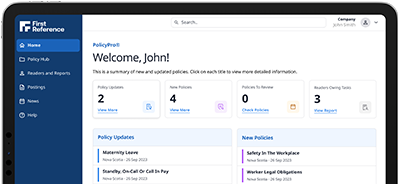
Managing workforces amid tariff wars: Best strategies for Canadian employers
First Reference
In today’s increasingly complex global trade environment, Canadian employers face unique challenges as trade tensions and tariff disputes continue to reshape international commerce. The ripple effects of these economic measures extend beyond balance sheets and supply chains, directly impacting workforce management and HR compliance requirements. This post explores key considerations and strategic approaches for Canadian employers navigating the complexities of tariff wars.
Understanding the impact of tariff wars on Canadian workforces
Tariff disputes between major trading partners create cascading effects across industries. For Canadian businesses, especially those with integrated North American supply chains or global operations, these impacts include:
- Operational cost increases due to higher prices for imported materials and components
- Market access challenges when Canadian exports face retaliatory tariffs
- Supply chain disruptions requiring rapid operational adjustments
- Workforce planning uncertainty as business forecasts becomes less reliable
These factors combine to create significant workforce management challenges that HR professionals and business leaders must address proactively.
Key HR considerations during trade uncertainty
Workforce Planning and Talent Management
Trade disruptions often necessitate strategic workforce adjustments. Canadian employers should consider:
- Conducting scenario-based workforce planning to prepare for different tariff outcomes
- Developing flexible staffing models that can scale up or down as market conditions change
- Creating skills inventories to identify internal mobility opportunities if certain operations must contract
- Implementing cross-training programs to enhance workforce adaptability
Compensation strategy adjustments
As operational costs increase due to tariffs, compensation strategies may require reassessment:
- Review total compensation packages to maintain competitiveness while managing costs
- Consider alternative reward structures that align with changing business priorities
- Evaluate the potential need for market adjustments in roles critical to navigating trade challenges
- Develop transparent communication strategies about any compensation changes
HR compliance requirements
Trade disruptions can trigger specific compliance considerations for Canadian employers:
- Employment Standards Act requirements if workforce reductions become necessary
- Notice period obligations that vary by province
- Severance payment requirements based on tenure and jurisdiction
- Consultation requirements with unions or work councils where applicable
- Documentation requirements to demonstrate compliance with provincial labor laws
Strategic approaches for Canadian employers
Supply chain workforce integration
As businesses reconsider supply chains to mitigate tariff impacts, workforce implications should be central to planning:
- Assess skill requirements for new or modified supply chain operations
- Develop training programs to support workforce transitions to new suppliers or processes
- Consider immigration and work permit requirements if operations shift across borders
- Implement change management strategies to support employees through transitions
Cross-border employment considerations
For Canadian businesses with operations in multiple countries, tariff wars create unique cross-border employment challenges:
- Review international assignment policies to address changing cost structures
- Assess immigration status of foreign workers if operations must relocate
- Consider tax implications for employees working across affected borders
- Evaluate potential changes to transfer pricing that may impact compensation
Government support programs
Canadian employers should stay informed about government programs designed to mitigate tariff impacts:
- Work-sharing programs that can help avoid layoffs during temporary downturns
- Skills development funding to support workforce transitions
- Export market diversification supports that may create new workforce opportunities
- Tax credits or other incentives to maintain Canadian operations
Building organizational resilience
Beyond tactical responses, Canadian employers can build longer-term workforce resilience by:
- Investing in digital skills development to support potential automation initiatives
- Creating agile work structures that can quickly adapt to changing trade conditions
- Developing scenario-based business continuity plans with clear workforce implications
- Building stronger labour relations frameworks to navigate uncertainty collaboratively
Best practices for HR compliance during trade uncertainty
Canadian employers must maintain rigorous compliance practices even while responding to trade disruptions:
- Document all workforce decisions with clear business rationales
- Ensure consistent application of policies to avoid discrimination claims
- Maintain open communication with legal counsel on provincial employment law requirements
- Develop protocols for handling confidential workforce planning discussions
- Establish clear metrics for measuring the effectiveness of workforce adjustments
Choosing a powerful tool like Human Resources Advisor (HRA) can help. HRA is regularly updated with compliance and current best practices that keep your organization up to date with requirements and help you tackle any challenge that occurs.
Conclusion
While tariff wars create significant challenges for Canadian employers, they also present opportunities to build more resilient, adaptable organizations. By approaching workforce management strategically, maintaining rigorous compliance practices, and leveraging available support programs, Canadian businesses can navigate trade uncertainty while positioning themselves for long-term success. The most effective organizations will be those that view their workforces as strategic assets in responding to trade disruptions rather than simply as costs to be managed.
For Canadian employers, the key is balancing short-term responsiveness with long-term workforce development, all while maintaining strict adherence to the complex array of employment regulations that protect Canadian workers during periods of economic uncertainty.
First Reference helps to simplify compliance complexities, enabling businesses and non-profits in Canada to fulfill their legal and ethical obligations with confidence and ease.
Table of Contents
Compliance Made Easy®




